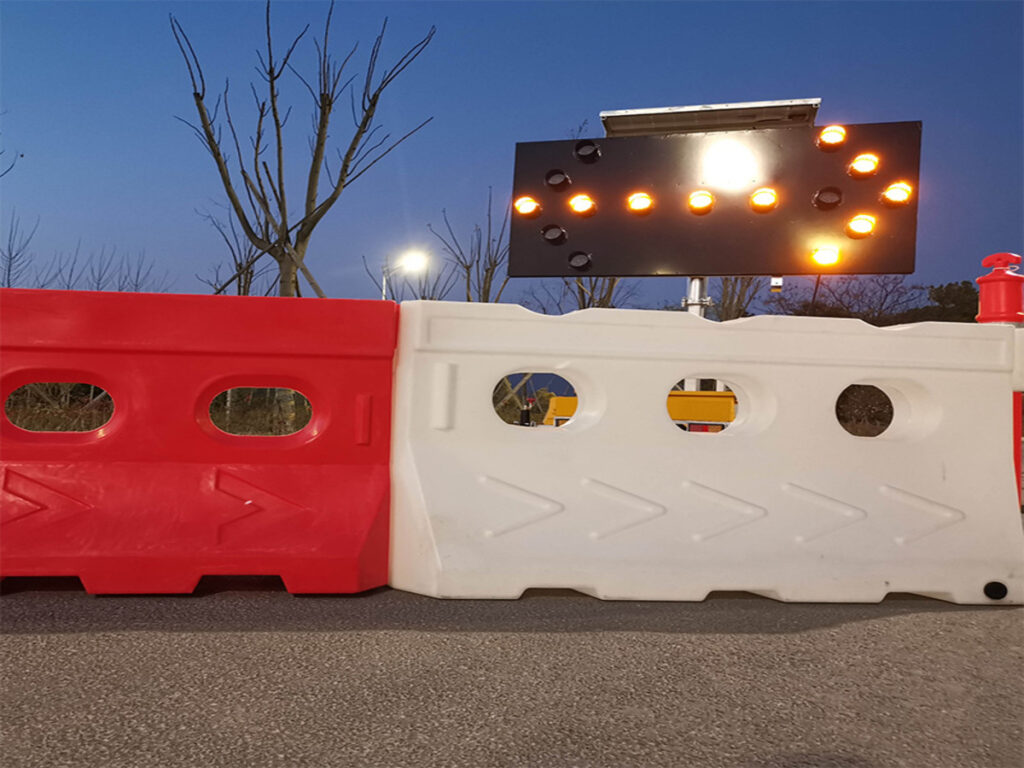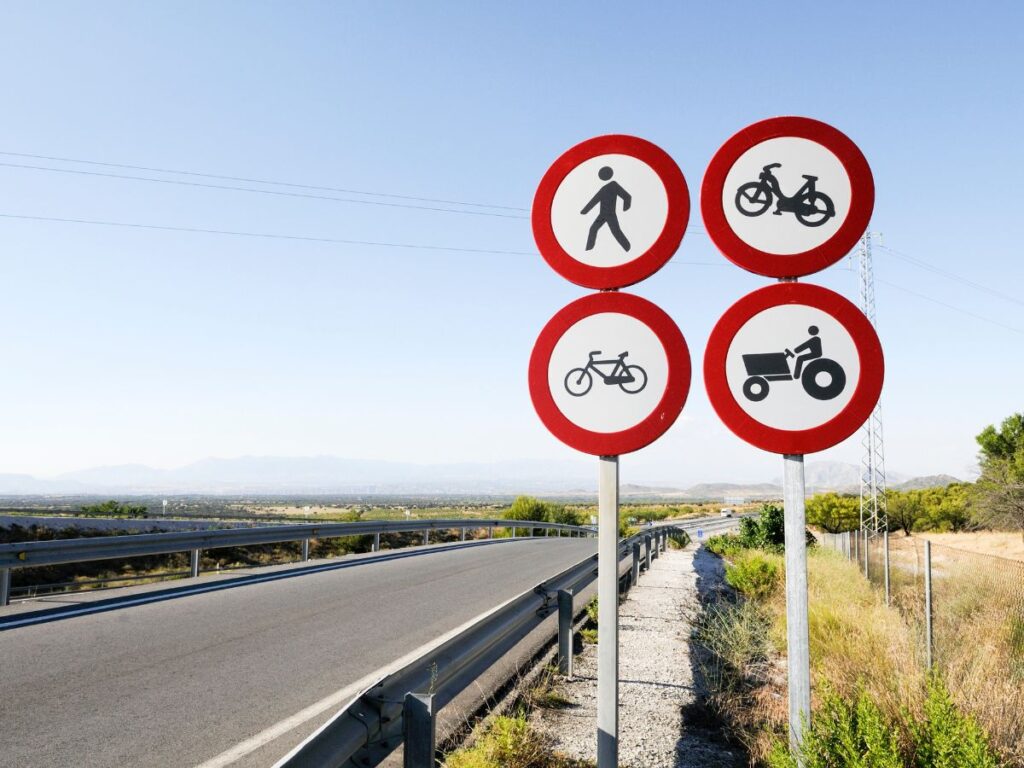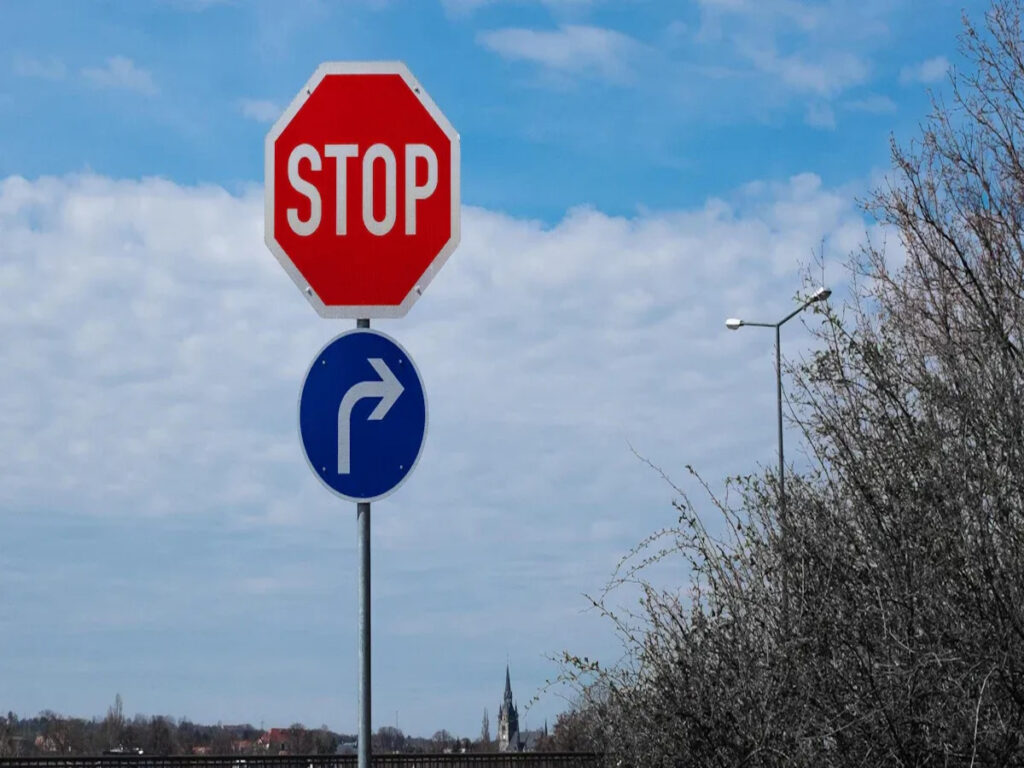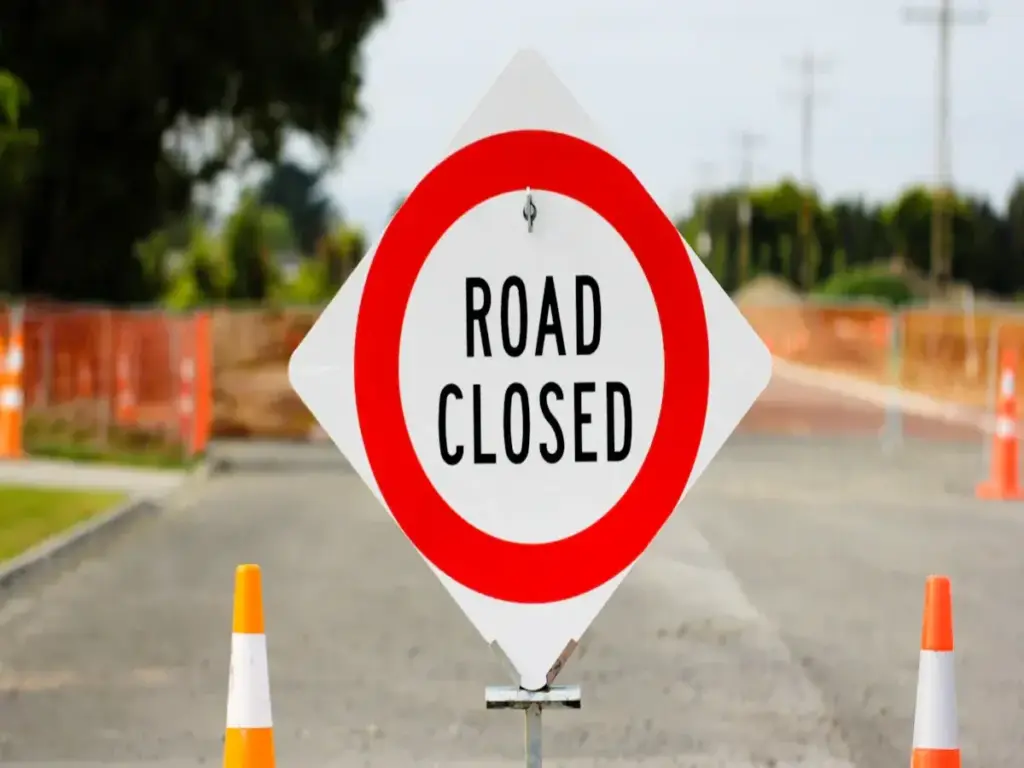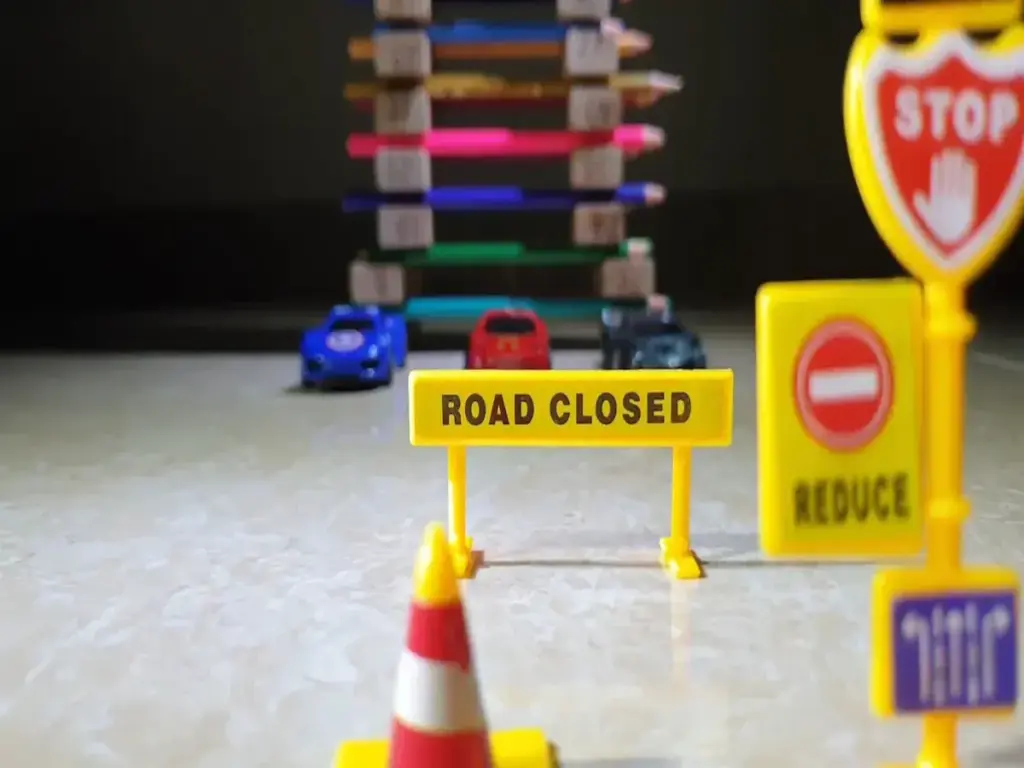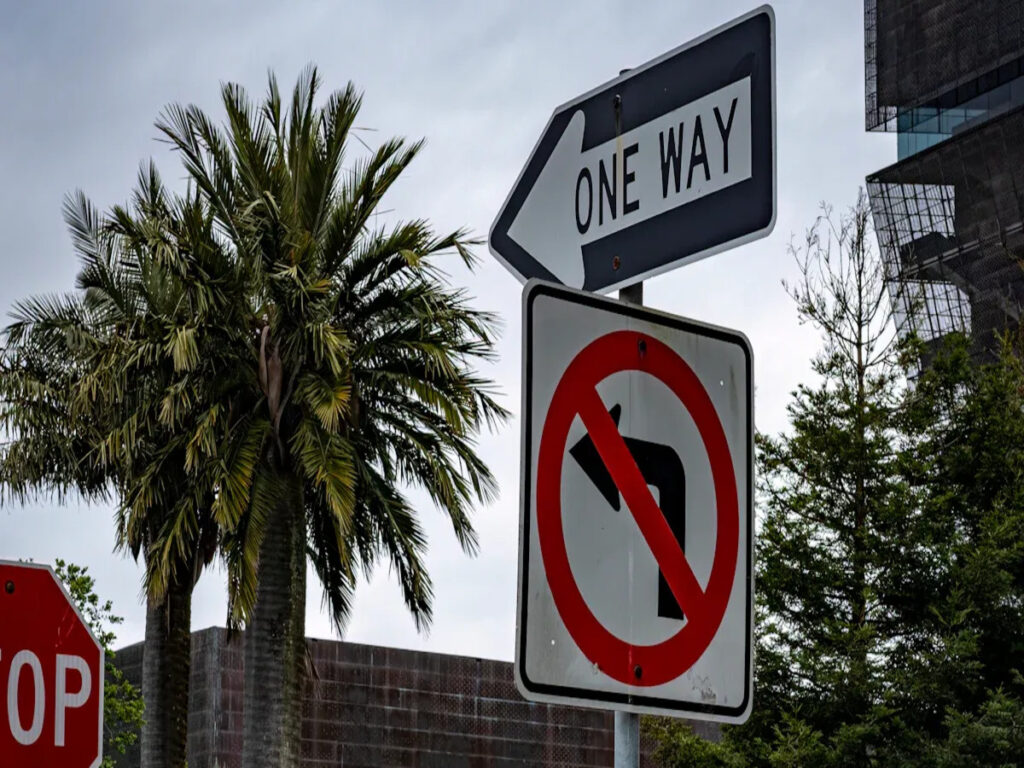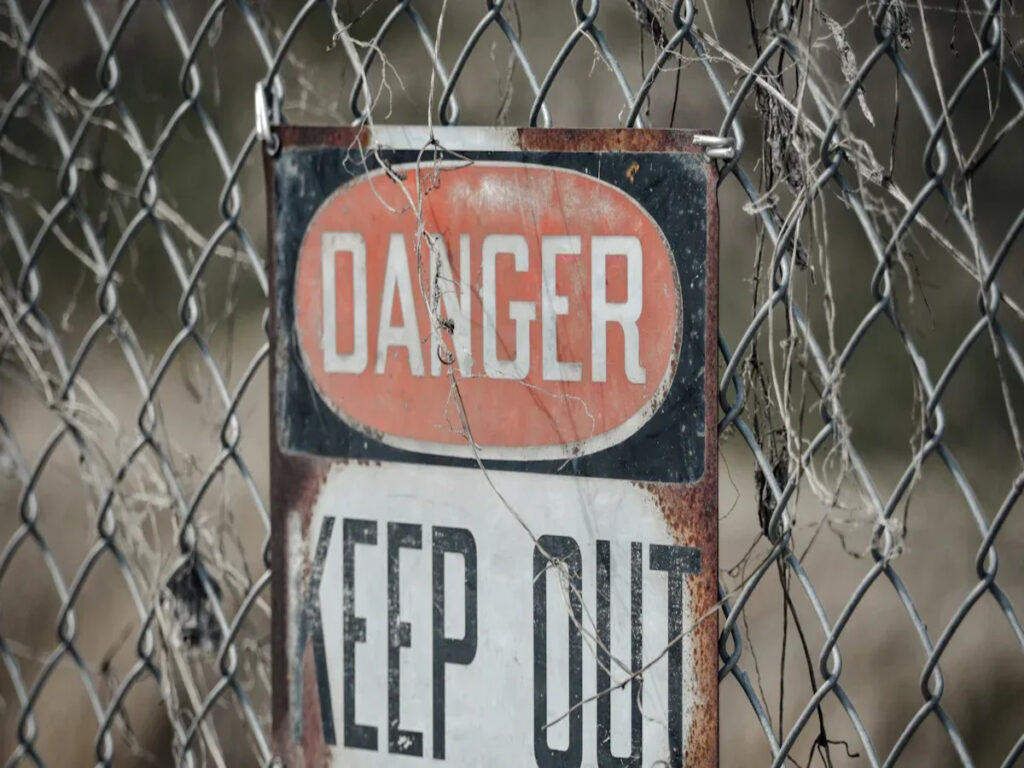
처럼 1319 작업장 안전 징후 색상을위한 호주 표준입니다. 처음 소개되었습니다 1952 여러 번 업데이트되었습니다, 그만큼 1994 버전은 오늘날 사용 중입니다. 이 지속적인 역사는 호주의 안전 징후 색상에 대한 신뢰성을 보여줍니다.. 연구에 따르면 안전 징후 색상의 색상 코딩 색상은 개인이 위험을 신속하게 인식하고 즉시 신속하게 응답 할 수 있습니다., 따라서 직장 안전을 향상시킵니다. 안전 징후를 준수하여 호주 표준에 따라 색상 코딩을 통해 위험을 즉시 식별 할 수 있습니다., 효과적인 간판을 지원하고 사고 발생률을 줄입니다.
Optraffic에서, 우리의 안전 간판 솔루션은 AS를 충족하도록 설계되었습니다 1319 표준, 모든 색상을 보장합니다, 상징, 그리고 메시지는 가장 중요한 곳에서 명확하고 즉각적인 영향을줍니다.: 현장에서 사람들을 보호합니다.
어떻게 AS에 대한 자세한 내용 1319 표준은 효과적인 안전 통신을 형성합니다, 블로그를 방문하십시오: 처럼 1319: 호주를위한 직장 안전 간판 표준 안내서.
주요 테이크 아웃
- 처럼 1319 특정 색상을 사용하여 사람들이 위험을 빨리보고 무엇을 해야할지 알 수 있도록 도와줍니다., 직장을 더 안전하게 만듭니다.
- 빨간색은 위험이나하지 말아야 할 일을 보여줍니다, 노란색은 조심해야합니다, 블루는 당신이해야 할 일을 알려줍니다, 그리고 녹색은 비상 지원을 제공하거나 안전한 장소를 보여줍니다.
- Color Psychology는 사람들이 안전 메시지를 얼마나 빨리보고 이해하는지 변화하기 때문에 징후가 더 잘 작동하는 데 도움이됩니다..
- 표지판에 잘못된 색상을 사용하는 경우, 사람들은 혼란 스러울 수 있으며 사고가 발생할 수 있습니다, 따라서 AS를 따라야합니다 1319 색상 규칙과 노동자를 가르치십시오.
- 표시를 자주 확인하고 항상 올바른 색상을 사용하면 안전 표시가 쉽게 볼 수 있습니다., 신뢰할 수 있습니다, 그리고 사고를 중단하는 데 능숙합니다.
처럼 1319 안전 징후 색상 시스템
색상 코딩의 목적
안전 징후의 색상 코딩은 사람들이 위험을 발견하는 데 도움이됩니다. 또한 그들이 무엇을 해야할지 아는 데 도움이됩니다. AS 1319 표준은 특정 색상과 기호를 사용합니다. 이들은 사람들이 어떤 종류의 위험이 있는지 또는 어떤 행동이 필요한지 알 수 있도록 도와줍니다.. Semiotic Psychology에 대한 연구는 사람들이 안전 메시지를 보는 방식을 바꾸는 색상을 보여줍니다.. 예를 들어, 빨간색은 위험 또는 중지를 의미합니다. 녹색은 안전하거나 이동하는 것을 의미합니다. 이 색상은 이유가 있습니다. 연구에 따르면 사람들은 스트레스를받을 때 어떤 색상에 더 빨리 반응합니다..
호주 해변에서의 연구에 따르면 색과 모양이 중요합니다.. 밝은 색상과 명확한 기호가있는 경고 표시가 눈에 띄기 쉬웠습니다.. 사람들은 안전 메시지를 더 잘 이해했습니다. 이것은 색상 코딩이 모든 사람이 징후를 빠르게보고 이해하는 데 도움이된다는 것을 증명합니다..
처럼 1319 또한 안전 징후에 대한 정확한 색상 공간과 밝기를 제공합니다.. 아래 표에는 각 안전 색상에 대한 반음도 좌표 및 최소 휘도가 나와 있습니다.. 이 규칙은 모든 관점에서 징후를 쉽게 볼 수 있도록합니다..
| 안전 색상 | 색도 좌표 (엑스, 와이) 범위 | 최소 휘도 요인 |
|---|---|---|
| 빨간색 | 대략. (0.524 에게 0.690, 0.310 에게 0.351) | ≥ 0.07 |
| 파란색 | 대략. (0.078 에게 0.272, 0.038 에게 0.260) | ≥ 0.05 |
| 노란색 | 대략. (0.427 에게 0.541, 0.419 에게 0.534) | ≥ 0.45 |
| 녹색 | 대략. (0.007 에게 0.308, 0.391 에게 0.754) | ≥ 0.12 |
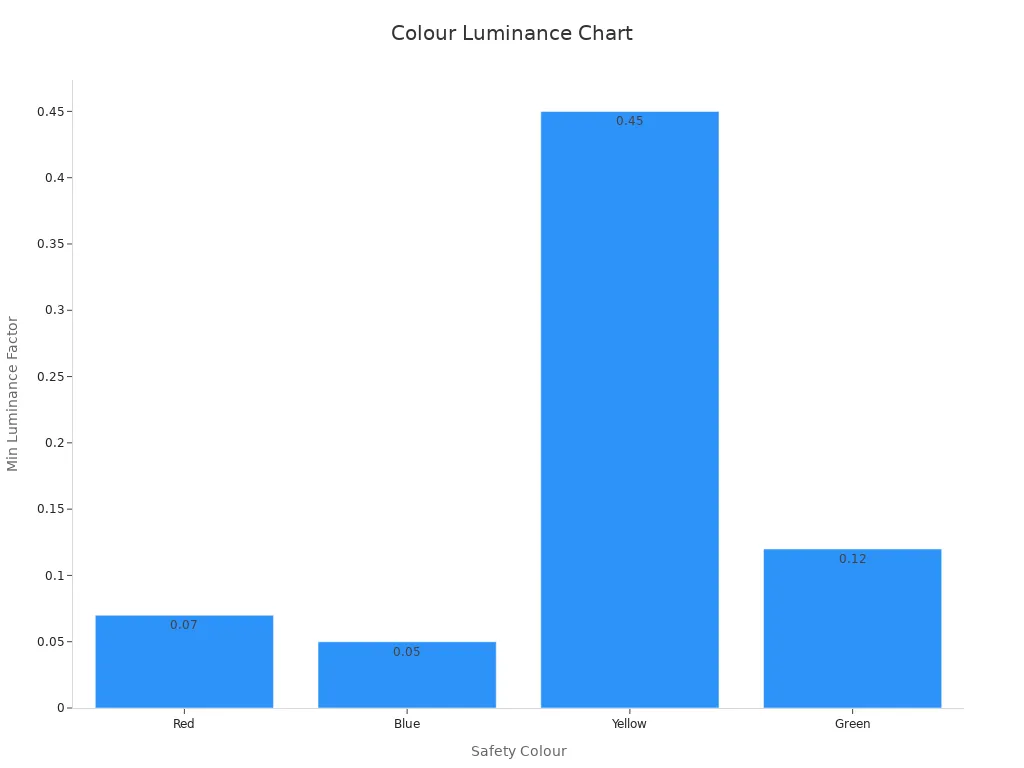
안전 징후 범주
처럼 1319 안전 징후를 4 가지 색상 그룹에 넣습니다. 각 색상은 다른 메시지를 나타냅니다:
- 빨간색: 위험 및 금지 표시에 사용됩니다, 좋다 “항목 없음” 또는 화재 표지판.
- 노란색: 젖은 바닥이나 움직이는 기계와 같은 것에 대한주의와 경고를 의미합니다..
- 파란색: 해야 할 일을 보여줍니다, ~와 같은 “눈 보호를 착용하십시오”.
- 녹색: 안전한 위치를 알려줍니다, 응급 출구 또는 응급 처치처럼.
이 그룹은 사람들이 즉시해야 할 일을 알 수 있도록 도와줍니다.. 가상 현실 연구에 따르면 대부분의 사람들은 긴급 표지판을 위해 녹색과 검은 색을 좋아했습니다.. 많은 사람들이 안전을 가진 녹색과 검은 색으로 연결되어 있습니다 “가다”. 이것은 색상 코딩이 사람들이 빠르고 정확하게 행동하는 데 도움이된다는 것을 증명합니다..
처럼 1319 또한 각 표시가 어떤 모양과 경계에 있어야하는지 말합니다.. 예를 들어, 위험 표지판은 검은색 직사각형 안에 빨간색 타원을 사용합니다.. 필수 표시는 파란색 원을 사용합니다.. 이 모양들, 그림 물감, 및 기호를 사용하면 표지판을 쉽게 찾고 이해할 수 있습니다.. 이는 모든 사람이 안전 규칙을 따르고 호주 표준을 충족하는 데 도움이 됩니다..
AS의 안전표지 종류 1319
위험과 금지 (빨간색)
빨간색은 AS의 위험 및 금지 표시에 사용됩니다. 1319. 이 색은 큰 위험이 있거나 하지 말아야 할 일이 있음을 나타냅니다.. 위험 표지판은 빨간색을 사용하여 사망할 수 있는 것에 대해 경고합니다., 고전압이나 폭발과 같은. 금지 신호, ~와 같은 “금연” 또는 “입력하지 마십시오”, 또한 빨간색을 사용하여 허용되지 않는 것을 표시합니다..
처럼 1319-1994 위험 신호에는 검은색 직사각형 안에 빨간색 타원이 필요하다고 나와 있습니다.. 글자가 흰색이라 눈에 띄네요. 금지 표지판에는 흰색 배경의 검정색 그림 위에 선이 있는 빨간색 원이 있습니다.. 이 모양과 색상은 사람들이 메시지를 빨리 보는 데 도움이됩니다..
레드는 당신의 관심을 끌고 무언가가 시급하다는 것을 의미합니다. ISO 7010 기준, 많은 국가에서 사용됩니다, 또한 금지 및 화재 안전 징후를 위해 빨간색을 사용합니다. 예를 들어, 소화기 표지판은 빨간 사각형입니다. 화학 위험 라벨은 위험에 대해 경고 할 빨간색 경계가 있습니다..
| 사인 유형 | 의미 | 색상 | 모양 | 예 |
|---|---|---|---|---|
| 금지 표시 | 하지 말아야합니다 | 빨간색 | 대각선과 함께 원입니다 | 열린 불꽃이 없습니다 |
| 화재 안전 표시 | 소방 장비 | 빨간색 | 정사각형 | 소화기 |
안전 징후가있는 빨간색은 사람들이 안전을 유지하기 위해 빨리 행동하는 데 도움이됩니다.. Red the 올바른 길을 사용하면 사고가 중지되고 모든 사람이 안전 규칙을 준수 할 수 있도록 도와줍니다..
경고 (노란색)
노란색은 AS의 경고 표시에 사용됩니다 1319. 이 징후는 사람들에게 항상 치명적이지는 않지만 여전히 관리가 필요한 위험에 대해 이야기합니다.. 경고 신호는 같은 것을 말합니다 “주의: 젖은 바닥”, “지게차를 조심하십시오”, 또는 “미끄러운 표면”.
처럼 1319-1994 경고 표시는 검은 가장자리와 검은 색 그림이있는 노란색 삼각형이어야한다고 말합니다.. 이러한 색상과 모양으로 인해 멀리서도 쉽게 알아볼 수 있습니다..
- 연구에 따르면 노란색 배경은 파란색 배경보다 경고 표지판을 더 쉽게 읽을 수 있고 더 위험하다는 것을 보여줍니다..
- 노란색과 빨간색이 사람들의 주의를 더 집중하게 한다는 연구 결과가 나왔습니다., 그래서 그들은 위험을 더 빨리 알아차린다.
- 색상 심리학에 따르면 노란색은 사람들이 기민하고 흥분되는 느낌을 준다고 합니다., 그래서 경고에 좋습니다.
안전 표지판의 노란색은 작업자가 주의를 기울이고 부상을 방지하는 데 도움이 됩니다.. 노란색을 올바른 방법으로 사용하면 모든 사람이 경고 표지판을 볼 수 있고 위험한 장소에서 조심할 수 있습니다..
필수적인 (파란색)
파란색은 AS의 필수 표시로 사용됩니다. 1319. 이 표지판은 사람들에게 안전을 위해 무엇을 해야 하는지 알려줍니다.. 예는 다음과 같습니다 “눈 보호를 착용하십시오”, “청력 보호구를 착용해야 합니다”, 또는 “난간 사용”.
필수 표시에는 흰색 그림이 있는 파란색 원이 있습니다., AS로 1319-1994 말한다. 파란색과 흰색 색상은 메시지를 명확하게 만듭니다.
| 사인 유형 | 부호 의미의 평균 이해 (%) | 모양 색상 코드의 평균 이해력 (%) |
|---|---|---|
| 필수적인 (파란색) | 56.13 | 70.20 |
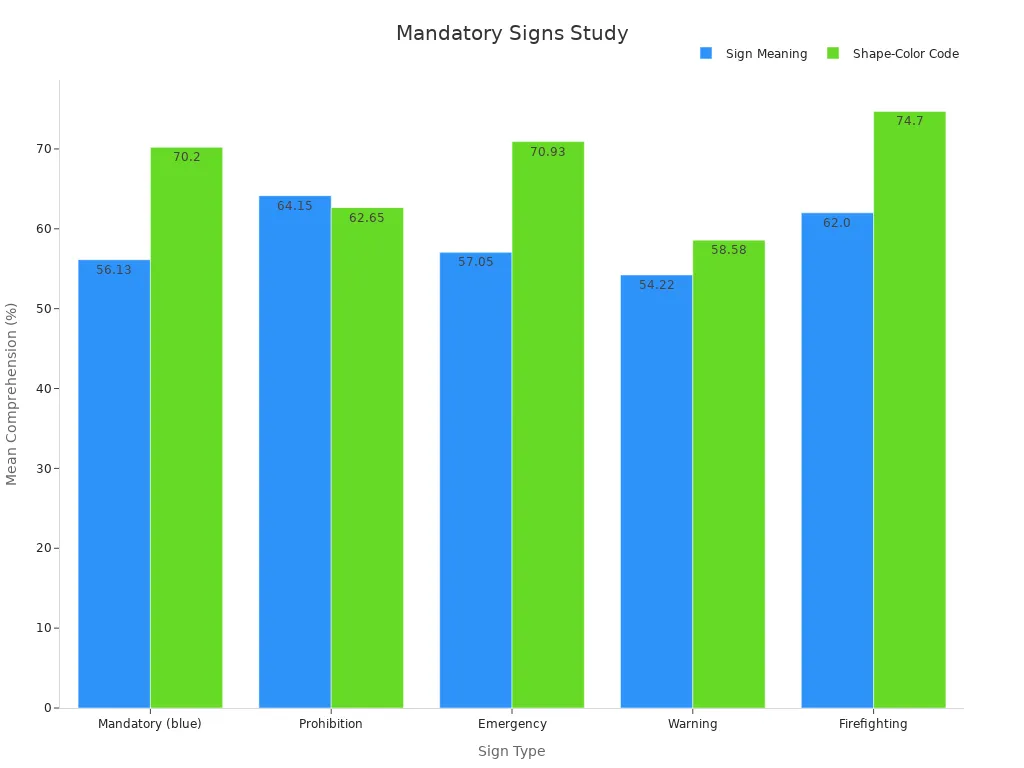
위의 표와 차트는 사람들이 필수 표지판의 모양과 색을 잘 이해하는 것을 보여줍니다., 그러나 때로는 지시에 의해 혼란스러워집니다. Clear Blue 표시는 사람들이 안전 규칙을 준수하고 올바른 일을하도록 도와줍니다..
비상 정보 (녹색)
녹색은 AS의 비상 표지판에 사용됩니다 1319. 이 표지판은 안전한 장소를 보여줍니다, 비상 종료, 응급 처치, 그리고 안전 장비를 찾을 수있는 곳. 예는 다음과 같습니다 “비상 종료”, “응급 처치”, 또는 “조립 지점”.
처럼 1319-1994 비상 표지판은 흰색 그림이나 단어가있는 녹색 사각형 또는 사각형이어야한다고 말합니다.. 이 색상 믹스는 사람들이 안전하다고 느끼고 긴급 상황에서 도움을 찾도록 도와줍니다..
가상 현실 연구에 따르면 사람들이 빨간색보다 녹색 출구 표지판을 선택했습니다., 레드가 규칙이었을 때조차도. 녹색 수단 “가다” 그리고 “안전한”, 그래서 사람들은 출구가 더 빨리 발견되어 빨리 나옵니다.
녹색 긴급 표지판은 모든 사람이 안전한 장소를 찾고 위기에 빠르게 행동하는 데 도움이됩니다.. 안전 표시에 녹색을 사용하면 메시지가 명확 해지고 비상 사태의 혼란을 멈출 수 있습니다..
팁: 항상 비상 표지판을 볼 수 있고 사물에 의해 차단되지 않도록하십시오.. 명확한 표시는 생명을 구할 수 있습니다.
안전 간판의 컬러 심리학
인식과 행동에 미치는 영향
색상은 사람들이 직장에서 표지판을보고 반응하는 방식을 바꿉니다.. 안전 징후의 각 색상은 뇌에 메시지를 보냅니다.. 빨간색은 무언가가 시급하거나 위험하다는 것을 의미합니다. 사람들은 빨간 표지판을 먼저보고 빨리 행동합니다. 노란색은주의를 끌고 사람들이 조심스럽게 지내도록 도와줍니다. 노동자들은 경고를 유지하지만 걱정하지 않습니다. 블루는 사람들이 침착하게 느끼고 표시를 신뢰하게 만듭니다. 이 색상은 사람들이 지침을 따르는 데 도움이됩니다. Green은 사람들이 안전하다고 느끼고 응급 상황에서 어디로 가야할지 보여줍니다.. 무언가 잘못 될 때 사람들이 기분이 나아지도록 도와줍니다.
연구는 사람들이 징후를보고 이해하는 방법을 보여줍니다..
- 빨간색은 가장 쉬운 색상입니다.
- 파란색, 녹색, 그리고 노란색은 빨간색보다 느리지 만 주황색보다 빠릅니다..
- 지역이 바쁘거나 사물로 가득 차면 색상이 더 중요합니다..
아래 표는 색상이 사람들이 알아 차리고 수행하는 방법을 보여줍니다.:
| 발견 | 설명 |
|---|---|
| 색상에 대한주의 편견 | 사람들은 녹색 대피 신호를 붉은 색보다 더 많이 본다. |
| 지각 처리 시간 | 뇌가 녹색 표시보다 이해하는 데 빨간 표시가 더 오래 걸립니다.. |
| 의사 결정에 미치는 영향 | 색상은 사람들이 기호를 선택하고 반응하는 방식을 바꿉니다. |
| 실질적인 의미 | 녹색은 사람들을 안전하게 지키기 위해 대피 표시에 가장 적합합니다.. |
건축 현장에 대한 연구는 올바른 색상이 근로자가 징후를 더 잘보고 이해하는 데 도움이되는 것을 발견했습니다.. 노동자들은 눈이 덜 피곤하다고 느꼈고 더 안전한 선택을했다고 말했다.. 이것은 컬러 심리학이 징후가 더 잘 작동하고 더 많은 사고를 멈추게한다는 것을 증명합니다..
준수 및 응답 향상
컬러 심리학은 사람들이 안전 규칙을 준수하고 비상 사태에서 빠르게 행동하도록 도와줍니다.. 근로자가 분명하게 보는 경우, 색상으로 구분 된 표지판, 그들은 바로 무엇을 해야할지 알고 있습니다. 색상으로 구분 된 헬멧은 근로자가 팀 리더 또는 안전 담당자를 빠르게 찾는 데 도움이됩니다.. 이 시스템은 혼란을 멈추고 사람들이 비상 사태에서 빠르게 행동하도록 도와줍니다..
아래 표는 색상으로 구분 된 표지판이 어떻게 더 안전하게 작동하는지 보여줍니다.:
| 메트릭 / 결과 | 통계량 / 결과 | 설명 / 영향 |
|---|---|---|
| 머리 부상 감소 | 60% 감소하다 | 헬멧을 착용하면 올바른 길을 착용하면 더 많은 머리 부상이 멈 춥니 다. |
| 근거리 사고 감소 | 35% 감소하다 | PPE 시스템은 사람들이 더 잘 말하고 실수를 피하는 데 도움이됩니다. |
| 헬멧 색상 코드로 거의 미스 감소 | 30% 감소하다 | 색상으로 구분 된 헬멧은 훈련받지 않은 사람들을 위험 구역에서 멀리 유지합니다. |
| 비상 대피 시간 | 아래에 5 분 | 컬러 코드는 모든 사람이 사이트를 빠르고 안전하게 떠나는 데 도움이됩니다.. |
색상으로 구분 된 표지판은 또한 근로자가 자신의 직업을 기억하고 규칙을 따르는 데 도움이됩니다.. 근로자는 팀의 일원처럼 느끼고 안전에 대해 더 관심을 갖습니다.. 명확한 기호와 색상은 표지판을 이해하기 쉽게 만듭니다, 사람들이 스트레스를받을 때조차도. 이것은 사람들이 규칙을 더 잘 따르고 어떤 상황에서도 더 빠르고 안전하게 행동한다는 것을 의미합니다..
부정확 한 안전 징후의 위험 색상 사용
혼란과 사고
안전 표시에서 잘못된 색상을 사용하면 큰 문제가 발생할 수 있습니다.. 사람들은 혼란스러워하거나 사고를 가질 수 있습니다. 녹색 표시가 노란색 대신 사용되는 경우, 노동자들은 장소가 안전하지 않을 때 안전하다고 생각할 수도 있습니다.. 한 연구에 따르면 노동자들은 색상과 모양이 예상했던 것이 아니기 때문에 징후를 이해하지 못했습니다.. 예를 들어, 어떤 사람들은 파란색 표시가 경고라고 생각했습니다, 그들이해야 할 일이 아닙니다. 이 믹스 업은 사람들이 실수를 저질렀습니다, 위험한 곳으로 들어가거나 중요한 규칙을 놓치는 것과 같습니다.
Fibreboard Industry의 연구에 따르면 많은 노동자들이 색상이나 모양보다 그림을 더 많이 보았습니다.. 그러나 색상이 메시지와 일치하지 않으면, 그들은 종종 잘못을당했습니다. 다른 문화와 언어로 인해이 문제가 악화되었습니다. 일부 징후, "마모 안전 하네스"및 "이 리프트를 사용하지 마십시오"와 같이, 이해하기가 매우 어려웠습니다. 이러한 실수는 훈련을 엉망으로 만들고 근로자가 안전 규칙을 준수하기가 더 어려워 질 수 있습니다.. 사람들이 표시가 의미하는 바를 얻지 못하면, 응급 상황에서 빨리 행동하지 않을 수도 있습니다, 부상으로 이어질 수 있습니다.
- 근로자는 표지판의 의미보다 모양 색상 코드에 의해 더 많이 혼합되었습니다..
- 일부 경고 신호는 잘 이해되지 않았습니다, 큰 실수를 일으켰습니다.
- 사람들이 징후를 이해하지 못한다면, 사고가 발생할 수 있습니다, 특히 위험한 곳에서.
모범 사례 권장 사항
혼란을 멈추기 위해, 직장은 모든 표시에 적합한 색상을 사용해야합니다. 그들은 AS와 같은 표준의 규칙을 따라야합니다 1319. 훈련은 근로자가 각 색상의 의미를 배우는 데 도움이됩니다. 훈련은 사람들이 더 잘 이해하도록 돕기 위해 옳고 그른 징후를 보여 주어야합니다..
테스트에 따르면 중요한 형태에 빨간 자국을 두는 것이 사람들이 더 빨리보고 규칙을 더 잘 따르는 것으로 나타났습니다.. 레드는 사람들이 위험을 의미하기 때문에 잘 작동했습니다.. 이것은 올바른 색상을 사용하면 모든 사람이 신속하게 표시를 주목하고 이해하는 데 도움이된다는 것을 증명합니다..
팁: 색상이 옳고보기 쉬운지 항상 표지판을 확인하십시오.. 희미하거나 부러진 표지판을 바로 변경하십시오.
작업장은 또한 표지판을 만들 때 다른 문화와 언어에 대해 생각해야합니다.. 클리어 사진, 올바른 색상, 간단한 단어는 모든 사람을 안전하게 지키는 데 도움이됩니다. 모든 표지판에 동일한 색상을 사용하면 훈련에 도움이되며 사람들이 비상 사태에서 더 빨리 행동하게 만듭니다..
안전 간판의 일관성 및 유지 보수
직장 전체의 균일 성
모든 직장에서 동일한 표시를 사용하면 모든 사람이 메시지를 빠르게 이해할 수 있습니다.. 간단한 디자인, 막대 패턴처럼, 복잡한 모양보다 발견하기가 더 쉽습니다. 사람들은 사인이 어디에서나 똑같이 보일 때 실수를 줄입니다.. 이로 인해 비상 사태에서 무엇을 해야할지 쉽게 알 수 있습니다.. 연구에 따르면 동일한 모양과 색상을 사용하면 작업자가 오류가 적고 더 빨리 행동하는 데 도움이됩니다..
안전 징후가 항상 동일 할 때, 사람들은 그들을 더 신뢰합니다. 예를 들어, 한 연구는 LED가있는 도로를 보여주었습니다 가변 메시지 부호 충돌이 적었습니다. 운전자는 무엇을 기대 해야하는지 알았 기 때문에 규칙을 더 잘 따랐습니다.. 이 아이디어는 직장에서도 작동합니다. 모든 사이트에서 동일한 표시를 사용하는 경우, 다른 국가의 근로자조차도 이해할 수 있습니다. 이것은 모든 사람이 안전을 유지하고 새로운 장소에 빨리 익숙해지는 데 도움이됩니다..
검사 및 유지
표지판을 확인하면 종종 직장을 안전하게 유지하고 규칙을 따릅니다.. 검사는 문제를 일찍 찾는 데 도움이되고 표시가 쉽게 볼 수 있는지 확인합니다.. 또한 표시가 최신 규칙과 직장에 필요한 것과 일치하는지 확인합니다..
- 정기적으로 정기적 인 표지판 및 안전 도구가 매일 작동하는지 확인하십시오..
- 빈번한 수표는 사고가 발생하기 전에 문제를 해결할 수 있도록 문제를 찾습니다..
- 검사 및 감사가 함께 직장을 안전하고 최신 상태로 유지하는 데 도움이됩니다..
- 진행중인 수표는 관리자에게 수정이 필요한 것에 대한 빠른 업데이트를 제공합니다..
- 이것은 안전 규칙을 유지하고 새로운 문제에 대비할 수 있도록 도와줍니다..
안전 감사 및 검사는 또한 위험과 안전하지 않은 행동을 찾는 데 도움이됩니다.. 그들은 누군가가 다치거나 벌금을 물기 전에 직장이 문제를 해결하게합니다.. 수표 기록을 유지하면 감사에 도움이되며 직장이 안전 규칙을 준수한다는 것을 증명합니다.. 표시를 돌보는 것은 명확하고 유용한 상태를 유지합니다., 모든 사람에게 더 안전하고 더 나은 일을하게됩니다.
AS의 색상 코딩 1319 사고를 멈추고 메시지를 명확하게합니다. 작업 안전 징후가 동일하게 보일 때, 근로자는 위험을 빠르게 발견합니다, 혼자라도. 전문가들은 볼 수 있고 읽기 쉬운 징후는 안전에 매우 중요하다고 말합니다.. 디지털 표지판, 사고가없는 날을 보여주는 카운터처럼, 모든 사람들에게 안전에 대해 상기시키고 직원 동기를 유지하십시오. 회사는 규칙을 준수하고 이해하기 쉽도록 자주 표시를 확인해야합니다.. 리더는 또한 안전 메시지를 흥미롭고 기억하기 쉬운 새로운 아이디어를 시도 할 수 있습니다..
직장이 국제적으로 운영되거나 표준을 비교하는 경우, 호주의 방식을 이해하는 것이 필수적입니다 1319 미국과 비교됩니다. OSHA 시스템. 블로그의 주요 유사점과 차이점을 살펴보십시오: OSHA 대. 처럼 1319: 미국의 안전 부호 표준에 대한 비교보기. 그리고 호주.
FAQ
각 색상은 무엇을 의미합니까? 1319 안전 징후?
| 색상 | 의미 |
|---|---|
| 빨간색 | 위험 또는 금지 |
| 노란색 | 경고 또는주의 |
| 파란색 | 필수 행동 |
| 녹색 | 비상 정보 |
색상은 근로자가 무엇을 빨리 해야하는지 알 수 있도록 도와줍니다. 각 색상은 다른 메시지를 보여줍니다. 이것은 위험을 쉽게 발견하거나 도움을 찾을 수있게합니다..
색상 코딩이 안전 부호에 중요한 이유는 무엇입니까??
색상 코딩을 통해 사람들은 위험을 빨리 볼 수 있습니다. 근로자는 이해하기 위해 많이 읽을 필요가 없습니다. 이 시스템은 시간을 절약하고 사고를 막는 데 도움이됩니다.
직장에서 얼마나 자주 안전 징후를 확인 해야하는지?
전문가들은 몇 달마다 안전 징후를 확인한다고 말합니다. 점검은 종종 신호를 밝고보기 쉽게 유지합니다. 깨진 또는 희미한 표지판을 즉시 교체하십시오.
다른 국가의 근로자가 다음과 같이 이해할 수 있습니다 1319 안전 징후?
대부분의 근로자는 AS1319 표시를 쉽게 이해할 수 있습니다. 색상과 모양은 많은 국가에서 사용되는 색상과 같습니다.. 이것은 모든 사람이 안전을 유지하는 데 도움이됩니다, 그들이 다른 언어를 사용하더라도.

